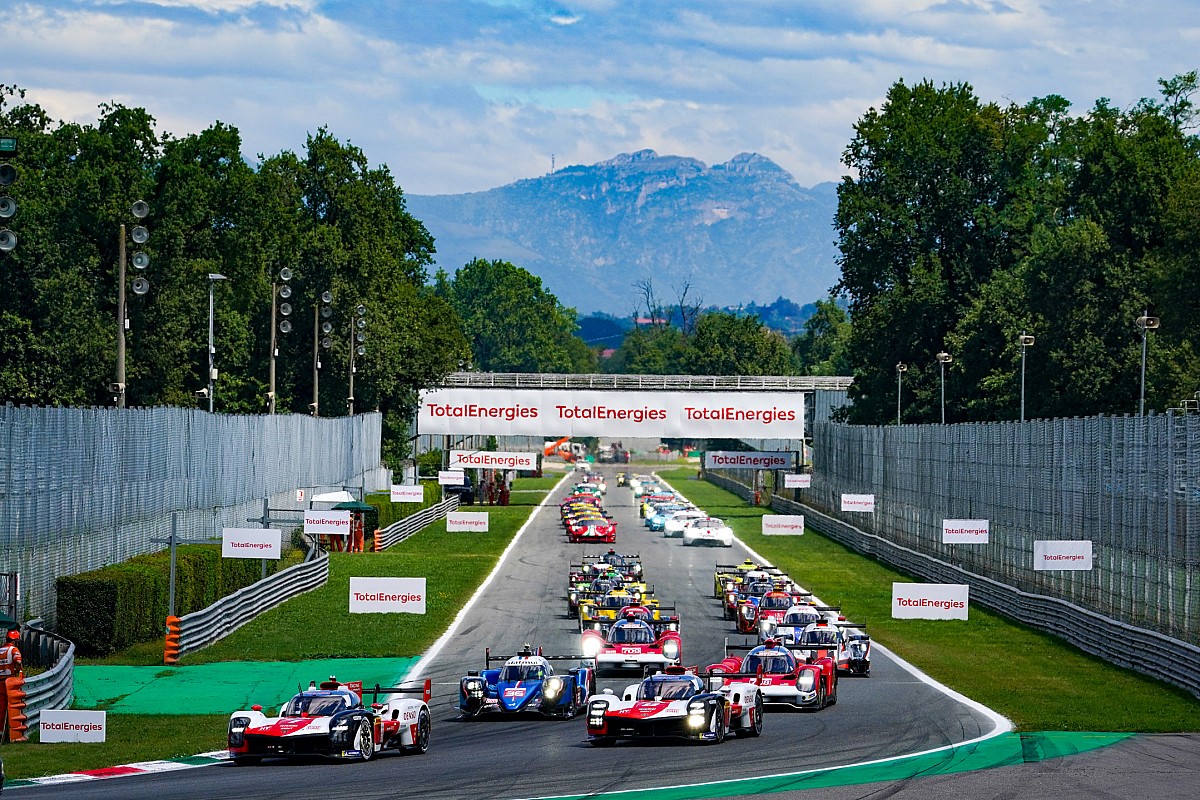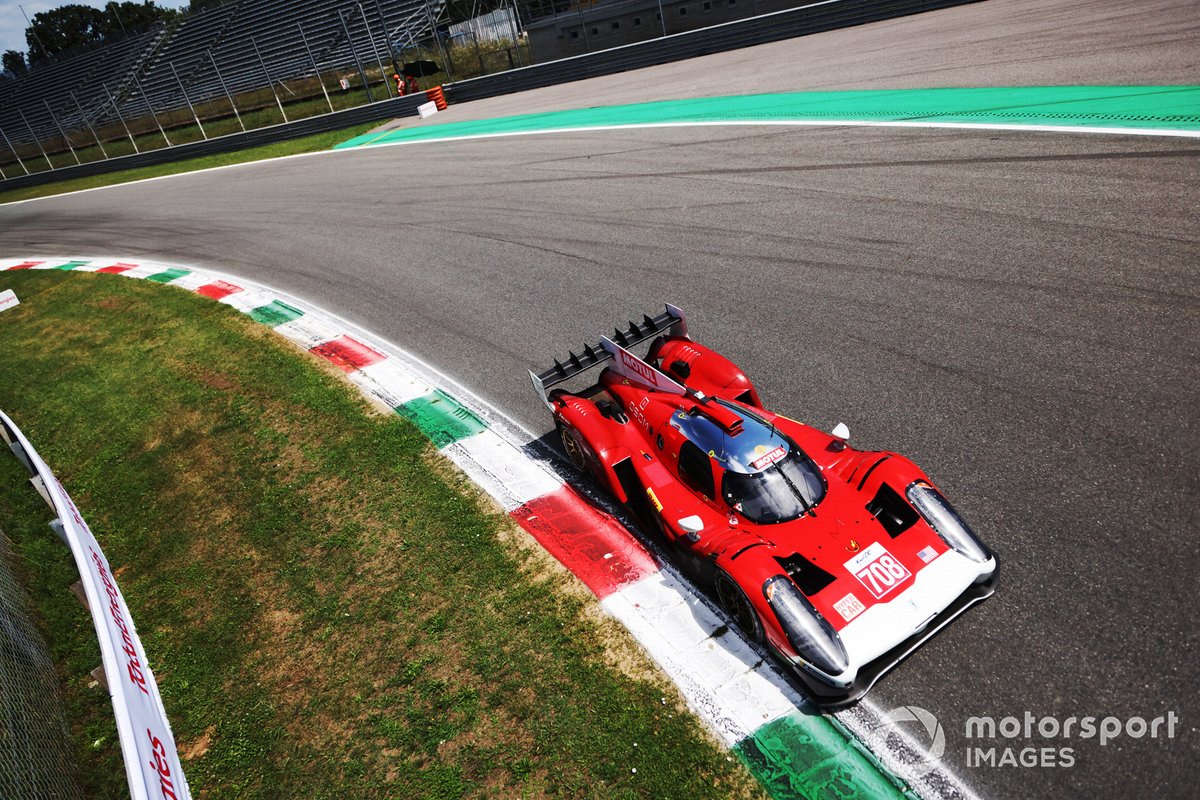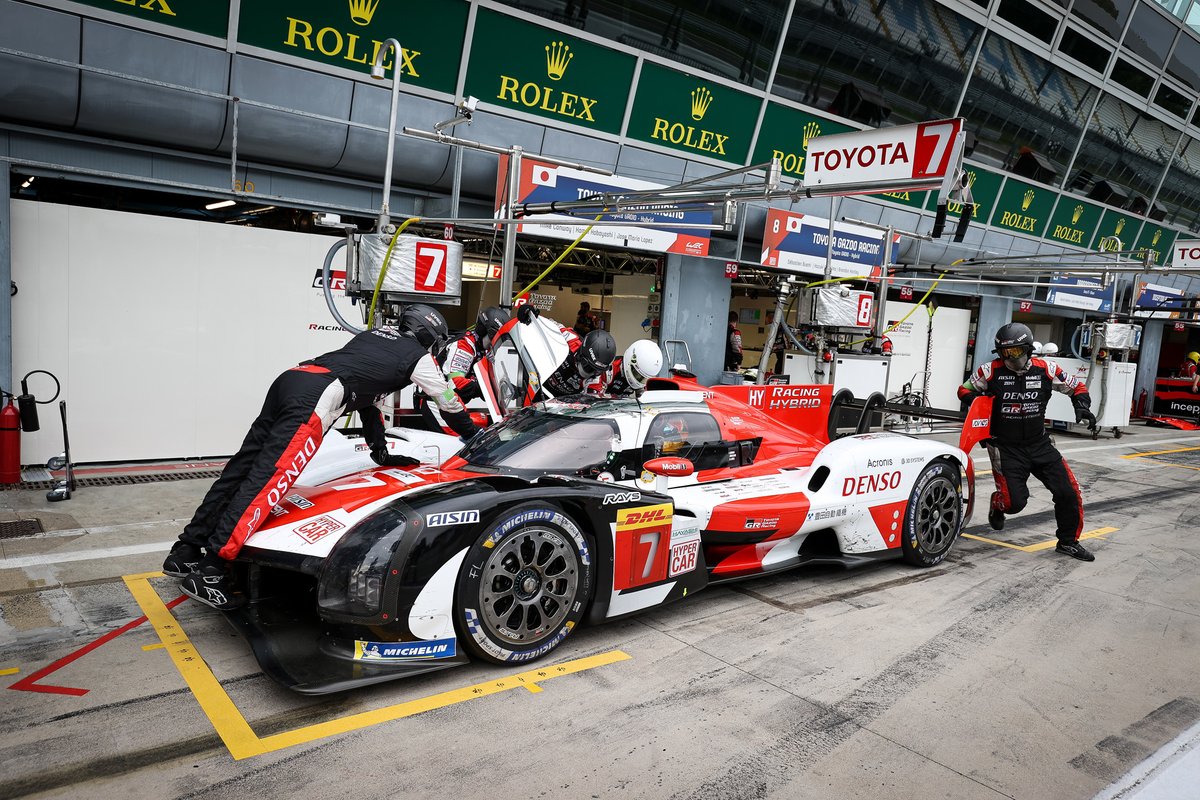
LMH has been introduced as a replacement for the LMP1 category, in a bid to reduce costs at the top end of endurance racing and increase its appeal to automotive manufacturers, after the likes of Audi and Porsche withdrew to leave Toyota as the only OEM remaining.
Toyota introduced its GR010 HYBRID for the start of the 2021 WEC season, while the US-based boutique manufacturer Glickenhaus added its non-hybrid 007 LMH to the field in time for the second round in Portimao.
There's still an LMP1 car in the series, with Alpine fielding its ORECA-designed A480 (formerly the Rebellion R-13) through a "grandfather" clause in the rules that allows non-hybrid LMP1 machinery to race on.
But what are the similarities and differences between LMH cars and their counterparts in Formula 1? Let's take a look.

Which is faster: an F1 car or an LMH car?
While both F1 cars and WEC cars are both capable of hitting speeds in excess of 200mph, Formula 1 cars have the edge on LMH cars when it comes to pace across an entire lap.
When Formula 1 visited Monza for the 2021 Italian Grand Prix, Valtteri Bottas took pole position with a 1:19.555, while fastest lap achieved by an LMH car at Monza for the 6 Hours of Monza was 1:35.899.

How much horsepower do LMH and F1 cars have?
With twin energy-retrieval systems augmenting the 1.6-litre V6 internal combustion engine in an F1 car, a 2021 F1 car produces an output of around 1000bhp, although this number is rarely confirmed by any of the powertrain suppliers within the category.
The LMH rules sets a cap on the total horsepower, 520kW or 670bhp, from all components of the powertrain in the interest of ensuring open competition. However, engine design is open, allowing manufacturers to choose their configuration and displacement. Energy recovery systems are optional, although the deployment of hybrid power is regulated to eliminate any unfair advantage over non-hybrid cars.
The hybrid system can be implemented within the front axle for an all-wheel drive configuration, and will regenerate energy expended from front-wheel braking. This hybrid system may not have an output of more than 200kW (268bhp).

What assists are available for F1 and LMH cars?
F1 cars currently incorporate a drag reduction system (DRS), allows the driver to open the rear wing to negate the effects of drag when following another car and have a greater chance to overtake. This is restricted, in a race situation, to a car within one second of the car in front. Drivers were formerly allowed to change engine modes during a race, but this was restricted partway through last season to allow drivers use of just one engine map across both qualifying and the race.
The LMH rules no longer allow hybrid power to be used as a push-to-pass overtaking tool: the power curve is defined for each car in the Balance of Performance table for each race. Power from the front axle can also only deployed above 120km/h (approximately 75mph) to ensure there is no traction advantage for four-wheel-drive cars out of lower-speed corners.

What's the difference between the WEC and F1 qualifying formats?
F1 qualifying takes place over three parts; Q1, Q2 and Q3. Q1 lasts 18 minutes and features all 20 cars attempting to set the fastest lap times. The slowest five cars are eliminated and set in their grid slots, while Q2 then features the remaining 15 cars. Q2 lasts 15 minutes, and once more the slowest five cars are eliminated and the top 10 progress to the final part – in which pole position is decided along with the grid slots down to 10th place.
WEC has a more traditional system system comprising two 10-minute sessions, one for the Hypercar and LMP2 classes, and another for the GTE divisions: the fastest lap from each qualifying driver sets the grid. A point is awarded to each of the drivers of the car that takes pole in the four classes.
The double-points Le Mans 24 Hours WEC round runs to a different format known as Hyperpole, which was introduced last year. The top six cars in each of the four classes during a 45-minute period on Wednesday, the first day of qualifying, go forward to the half-hour Hyperpole session on Thursday.

What are the differences between WEC and F1's race formats?
Formula 1 races last up to a maximum of two hours excluding any red flag stoppages, and are run to the shortest race distance exceeding 305km, barring the Monaco Grand Prix which runs to around 260km. Across the race, each car must use at least two of the three nominated tyre compounds provided by Pirelli, and pitstops may only be used for tyre changes and possible repairs following the ban on refuelling from 2010 onwards.
WEC races are much longer, hence the term “endurance racing”, and the majority of races last six hours. There are two eight-hour races on the 2021 calendar, at the Algarve circuit in Portimao and the second Bahrain race at the end of the season, while Le Mans lasts a full 24 hours.
The minimum duration is four hours, a format tried in the 2019/20 season.
This means that multiple drivers share each car, and there are regulations across each category that mandate minimum times behind the wheel for each driver. Endurance racing also assigns each driver a category – bronze, silver, gold and platinum – based on prior experience and results, and the LMP2 and GTE Am categories have set combinations of driver categorisations allowed. This does not apply to the Hypercar class, other than permitting no bronze drivers to participate in the class.

What's the difference between F1 and WEC's points systems?
For a six-hour race, WEC runs to the same 25-18-15-12-10-8-6-4-2-1 points format as F1, albeit with a half-point available for cars finishing below that in each class. It also awards a point for each class pole. Unlike Formula 1 though, it doesn't offer a point for the fastest lap.
WEC treats each class as a separate championship, and awards points to a team relative to their position within the class.
The eight-hour races and the Le Mans 24 Hours offer different points distributions. In an eight-hour race, the points are handed out in a 38-27-23-18-15-12-9-6-3-2 format for the top 10 with one point on offer to finishers below that. Le Mans runs to a 50-36-30-24-20-16-12-8-4-2 format, double the points on offer for a six-hour race.
Unlike the WEC, Formula 1 awards a point for the fastest lap of the race, provided it has been set by a driver within the top 10 at the chequered flag. There is no point for pole position, nor for drivers finishing below 10th.







